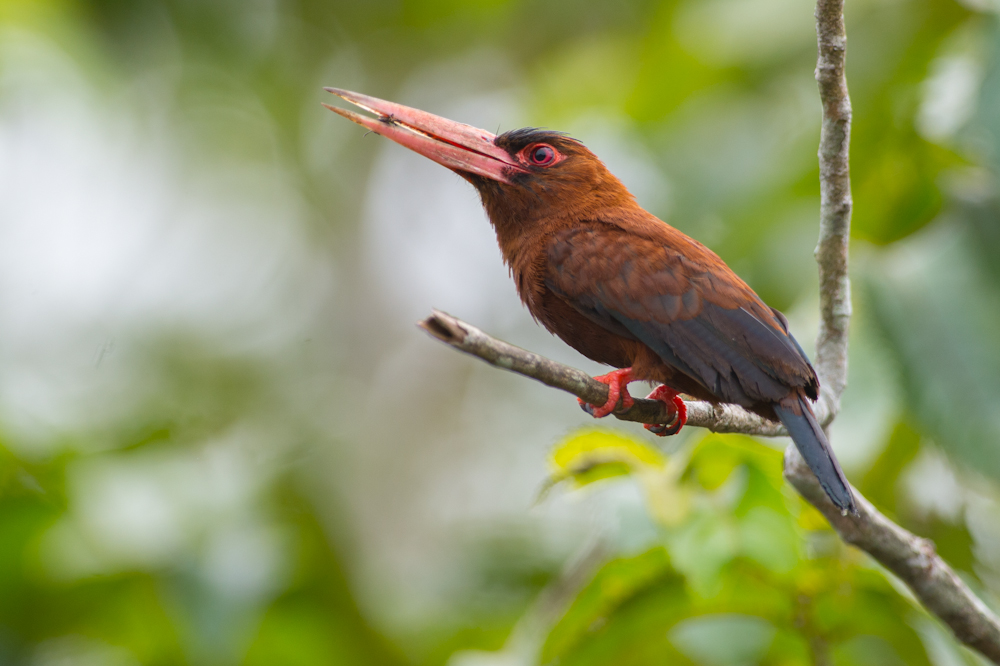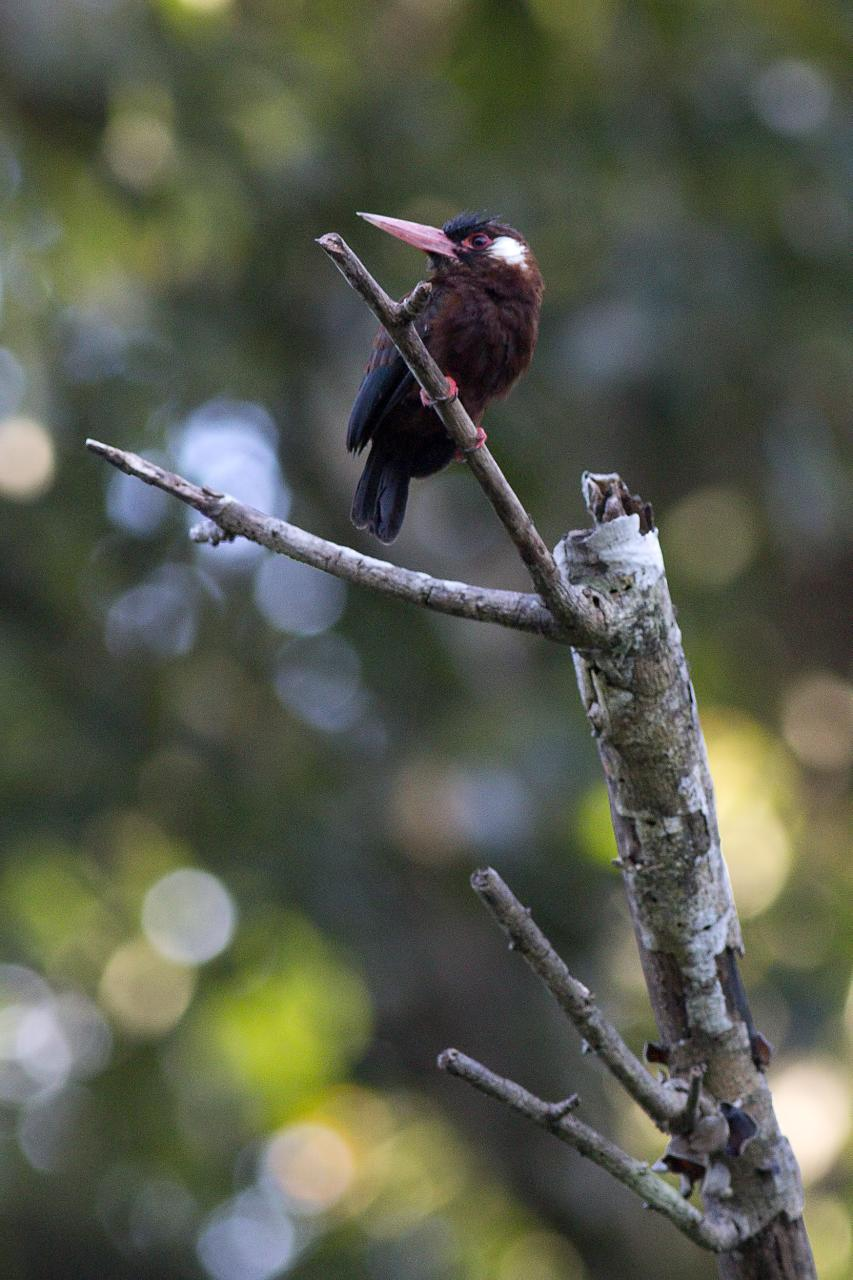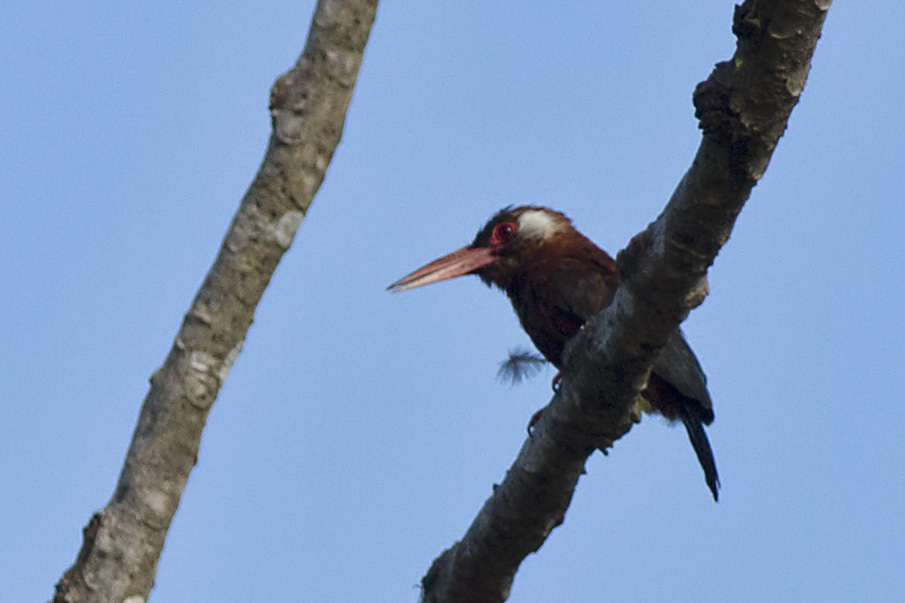
Purus Jacamar by Joao Quental, CC BY 2.0
Etymology: Small Yellowish Bird with a Bill
First Described By: Des Murs, 1845
Classification: Dinosauromorpha, Dinosauriformes, Dracohors, Dinosauria, Saurischia, Eusaurischia, Theropoda, Neotheropoda, Averostra, Tetanurae, Orionides, Avetheropoda, Coelurosauria, Tyrannoraptora, Maniraptoromorpha, Maniraptoriformes, Maniraptora, Pennaraptora, Paraves, Eumaniraptora, Averaptora, Avialae, Euavialae, Avebrevicauda, Pygostaylia, Ornithothoraces, Euornithes, Ornithuromorpha, Ornithurae, Neornithes, Neognathae, Neoaves, Inopinaves, Telluraves, Afroaves, Coraciimorphae, Cavitaves, Eucavitaves, Picocoraciae, Picodynastornithes, Piciformes, Galbuli, Galbulidae
Referred Species: G. leucotis (White-Eared Jacamar), G. purusianus (Purus Jacamar)
Status: Extant, Least Concern
Time and Place: Within the last 10,000 years, in the Holocene of the Quaternary


These Jacamars are known from the northwestern corner of South America

Physical Description: These Jacamars look like other Jacamars – with a small, ovular body, a round head, and a ridiculously large, triangular beak. This genus has red bodies and black wings and tail, with a black patch in the front of the head. They also have a red stripe going from the eye to the bill. They differ in that the White-Eared Jacamar has a white patch behind the eye, while the Purus Jacamar is just brown – otherwise they look very similar. They range from 18 to 21 centimeters in length. The sexes are relatively identical, and the juveniles are just a little more dull in color.
Diet: These birds feed on insects, primarily wasps, bees, and ants, as well as butterflies and termites.

White-Eared Jacamar by Steve Ryan, CC BY-SA 2.0
Behavior: This genus forages in small-sized groups in the middle level of the forest through to the canopy, jumping from the branches to catch insects in their open beaks. Sometimes they sail for a while before catching the insect, but they always return to their perch; often, they then beat their food on their perch thoroughly before eating it. They call with loud pee-ur vocalizations, with the entire group of birds flying towards the source of someone calling, then perching side by side on a branch and giving excited rattle calls in response. These rattles are usually accompanied by energetic head-bobbing, with their crest feathers erect and their tails pumped up and down. Sometimes, the whole group will make kyew-kyew-kyew calls together.

Purus Jacamar by Bill Bouton, CC BY-SA 2.0
These Jacamars do not migrate but, rather, stay in one range their whole lives. They breed depending on their specific range, with times for breeding varying throughout the year. They breed in groups of 4 to 6 individuals, all working together on the nests and the eggs, sometimes with all six individuals sharing the nests. They tend to make nests fairly high above the ground, rather than lower down. Unfortunately, beyond this cooperative nesting, little is known about their breeding habits.
Ecosystem: These Jacamars live in the amazon rainforest, often near rivers, lakes, and palm swamps. Sometimes they approach human-made habitat, but not often. These birds are usually found at lower elevations.

White-Eared Jacamar by Steve Ryan, CC BY-SA 2.0
Other: These birds are actually quite common and visible in their local ranges, though they do have small ranges that are vulnerable to habitat loss.
Species Differences: Beyond the white patch in the White-Eared Jacamar, these two birds have non-overlapping ranges, with the Purus Jacamar found somewhat more south than the White-Eared Jacamar.
~ By Meig Dickson
Sources under the Cut
